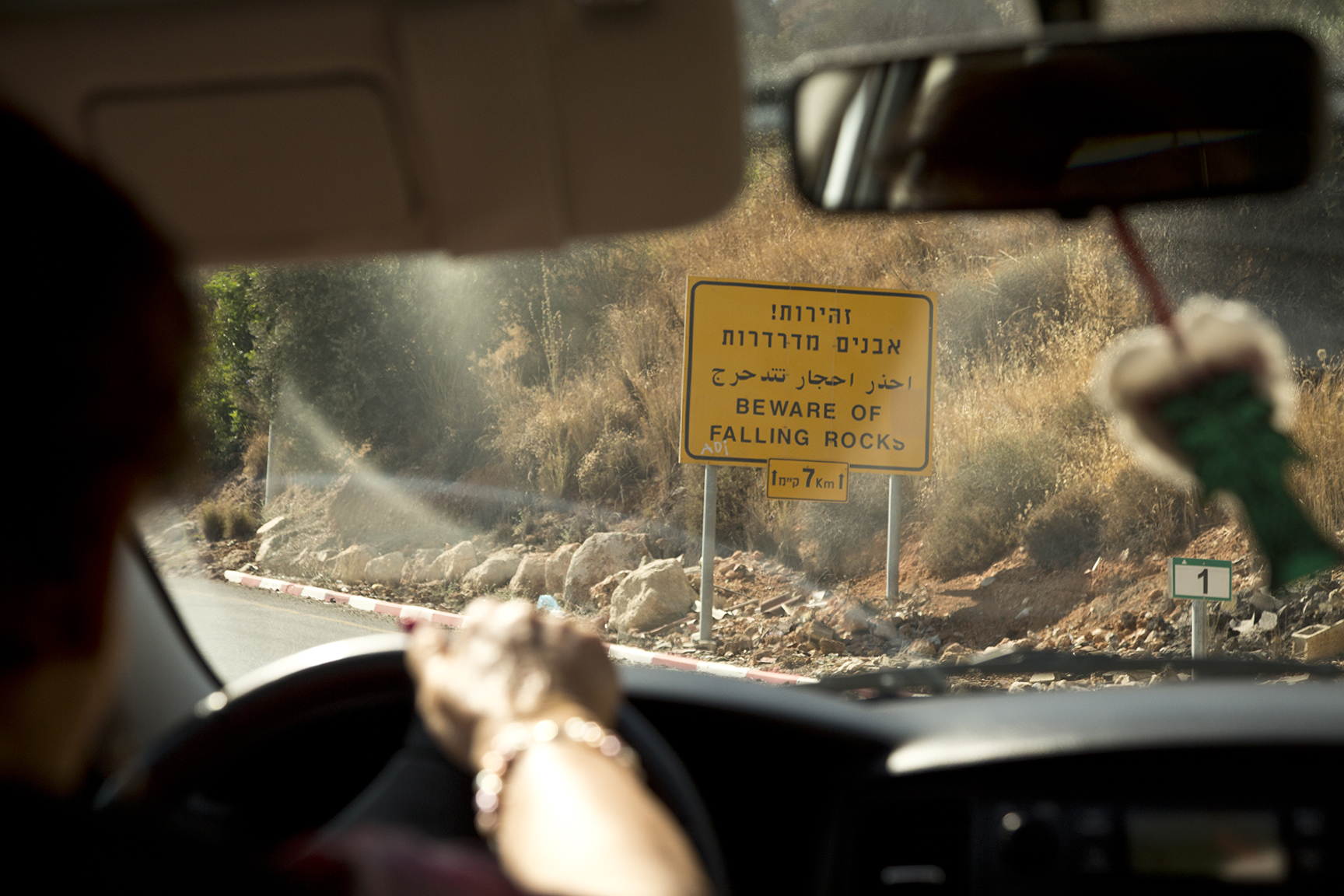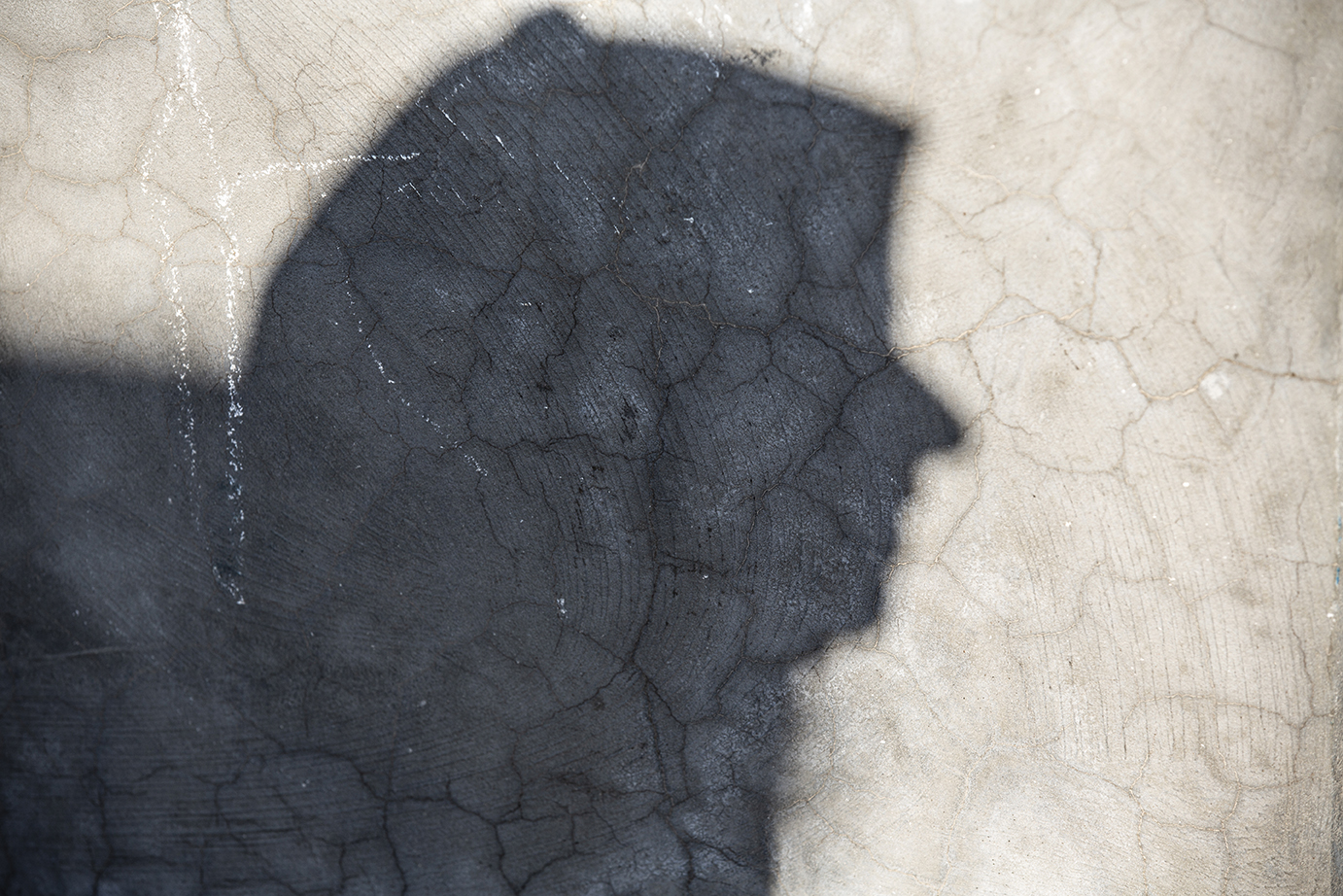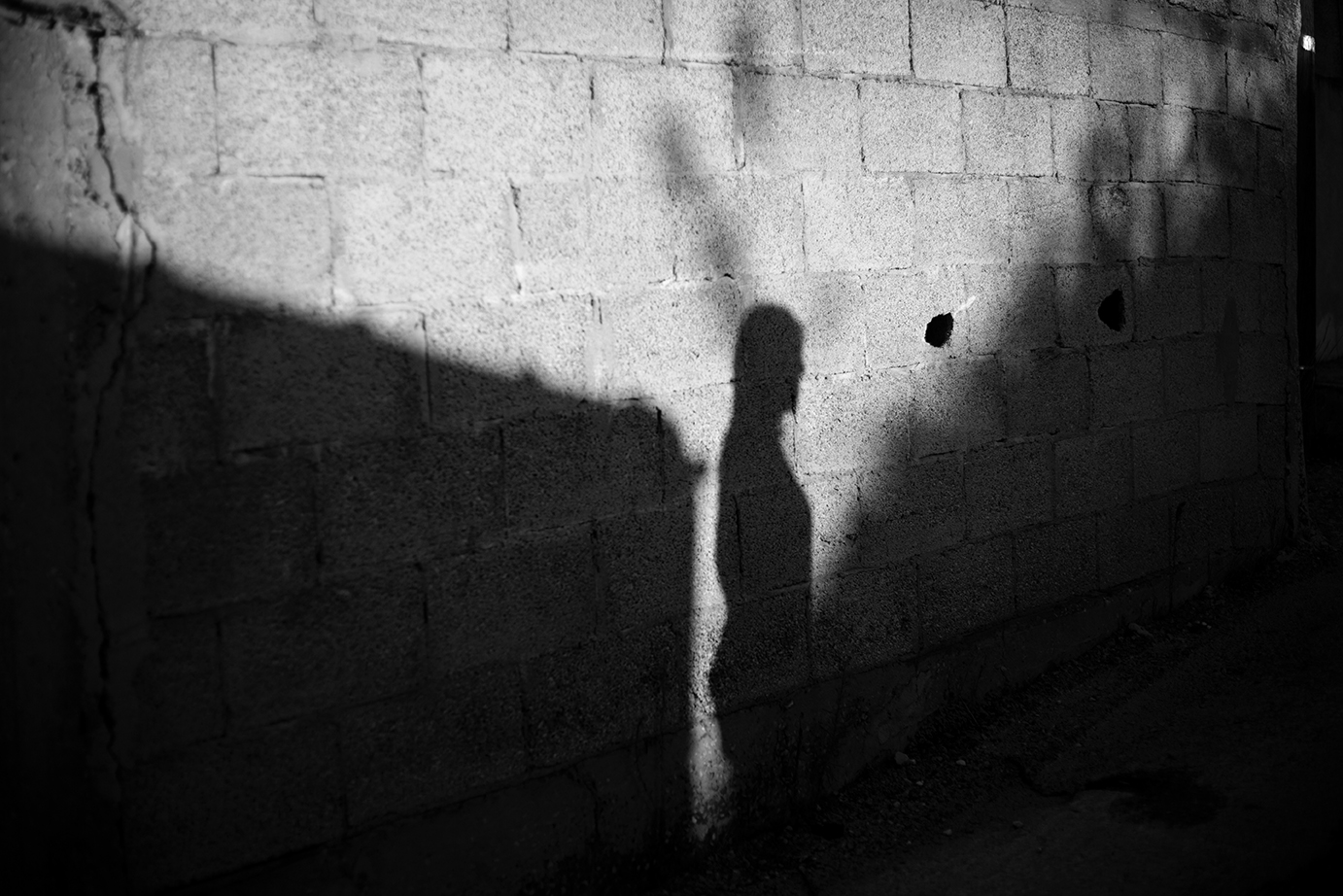Cover art by Yasmine Omari
My heart beats rapidly as my brother and I approach the soldiers at the roundabout. One stops our car as another stands behind him, eyeing our surroundings. A third soldier watches us from behind a concrete block, his rifle pointed directly at us. They ask us where we are going.
“To Gush Etzion,” I answer.
Gush Etzion is a military base just south of Bethlehem, located at the junction of the main road that connects Jerusalem to Hebron. It is named after the colony of Gush Etzion, a cluster of 22 Israeli settlements. The military base serves as an administrative outpost for the occupation, where Palestinians with West Bank ID cards living around Bethlehem and Hebron can apply for permits and other “civil services”, for lack of a better word. Today, I am there to collect a family permit. My brother parks the car in the parking lot. He stays in the car as I walk across the asphalt and go inside.
The waiting area is dotted with every demographic you can imagine: a skinny teenage boy, an elderly woman with bad knees, a young woman with chocolate curls, and Palestinian workers who earn their living inside Israel.
I walk past the waiting crowd to the end of the hall, where a machine asks me to enter my ID number or swipe my “magnetic card” – the term we use for a biometric pass that Palestinians with a West Bank ID card can obtain. It is a precondition for obtaining a permit to enter or travel through Israel, which is otherwise prohibited. This system enables the army to rapidly access information on Palestinians by connecting their background and security data to their biometric data, including fingerprints and iris scans, which they must renew every four years. This allows Israel to gather intelligence and punish those who transgress by withholding permits - or worse.
A box pops up on the screen. It asks the purpose of my "visit." I was given four options: to apply for or collect a permit, to apply for or renew a magnetic card, to pay a fine to the Israeli police, or for an interview with Israeli intelligence.
Today I select option number one: to apply for or collect a permit.
I am from Beit Sahour, a town east of Bethlehem. Eleven years ago, I married an Arab citizen of Israel. Israeli law does not allow Arab citizens of Israel to grant their Palestinian partners citizenship. So, for the past eleven years, I have depended on family permits to live in Israel with my husband and four children.
I have to renew this permit every two years. The renewal process begins at the office of the Ministry of Interior. Here, I submit paperwork: water and electricity bills, letters from my husband’s employer, letters from my children’s schools, bank information, and more. Once the ministry approves my documents, I travel three hours to the military base in Gush Etzion to collect my permit.

Photography by Yasmine Omari
This family permit allows me to live and work in Israel, but it is far from a normal residency document. I cannot apply for health insurance or a bank account. I cannot fly abroad through Israeli airports unless I obtain an additional permit.
Every time I come to Gush Etzion, I consciously put myself into a state of hearkening: witnessing with deliberate receptiveness to the inner and outer intricacies of the experience, recording what happens inside of me, between the Palestinians who are waiting, between the Palestinians and the Israeli soldiers, and among the Israeli soldiers themselves.
I have tried repeatedly to put what I witness into words, and I have often failed. The occupation regime is deeply entrenched in our lives and creates pockets of isolated experiences for different subgroups of Palestinians, making attempts at coherent narration nearly impossible.
I return to that word: hearkening. I learned this word from the writings of Etty Hillesum, a Jewish Dutch woman who died in Auschwitz. In her published diaries, she wrote: “Truly, my life is one long hearkening unto myself and unto others, unto God. And if I say that I hearken, it is really God who hearkens inside me. The most essential and the deepest in me hearkening unto the most essential and deepest in the other. God to God.”
Hearkening is a choice. It helps me deal with the otherwise unfathomable insanity of our daily reality, of a day at Gush Etzion. I need to – I choose to – believe in people’s humanity no matter what position they are in. I need and choose to imagine that one day, this will end. I imagine that one day, Gush Etzion will become a museum that bears testimony to a dark past.
The machine produces a numbered slip of paper for me. I return to the hall and find the last empty seat. I brace myself: I may be waiting for half an hour, two hours, six hours. Sometimes, you wait all day before being told to come back another time. You never know.
Every time I enter this base, I design the Museum of Gush Etzion in my mind. One day, visitors will drive to this building and park their car where I once parked mine. They will enter the same waiting area and walk through it to check in using the same machine. Walk in my footsteps.
As I wait for the number on my paper slip to be called, I write and re-write museum guides in my head. One day, a plaque here for where we used to sit and wait. A booklet, perhaps, explaining what West Bank ID cards were, how these set us apart – and quite literally kept us separate – from our people in Gaza and Jerusalem.

Photography by Yasmine Omari
My gaze is fixed on the end of the hall as I build this imaginary museum. On the left is a turnstile metal gate, operated remotely by an Israeli soldier sitting behind a bulletproof glass window. Although the machine allocates us numbers, it is the soldier who decides whose turn is when. Sometimes, it depends on the type of "service" selected. With every number that is called, there is some commotion from people with lower numbers who are still waiting - frustrated, thirsty, exhausted.
A Palestinian worker walks up to the bulletproof window and asks the soldier when he will be allowed to enter. He explains that he has been waiting since 08:00. I look at my watch and see that it is 14:00. The soldier dismisses him.
Today, it takes two hours for my number to be called. I step into the turnstile gate and hear a mechanical click – the sign that it has been opened – and step through, pushing the heavy bars until I emerge on the other side. I turn left and through a door that leads into another hall. There, to my left, another full waiting area.
On my right are three numbered doors leading to three small rooms, and next to them, two bulletproof windows.
In the past, the numbered doors would only be used for magnetic card applicants. Once you entered these small rooms, a soldier behind a bulletproof window would take you through several steps. First: fingerprints on the scanner; thumb first, then four fingers, then index finger only. Then, an iris scan on a machine just above the fingerprint scanner; stand facing the camera, stay still, don’t blink. Then they would ask questions: where do you live? What is your mother’s name? I once asked the soldier why they asked me questions they already know the answers to. “This is the protocol,” he answered. In my head, I added this protocol to the Museum of Gush Etzion.
I take a seat in this second waiting area, where I listen to numerical combinations coming through a speaker. "Number A 23 in room 3.” The young woman with the chocolate curls sighs and enters the third room. My gaze is fixated on the two bulletproof windows, which are for permit applicants.
A soldier appears behind one of the windows. I join the small crowd that rushes to him. An old woman in a colorful embroidered dress pushes through to the front. She is told to get in line but protests: she has bad knees and needs a permit to go to the hospital in Jerusalem, where her four-year-old grandson is undergoing surgery. The soldier slides her a form through a small opening beneath the glass and tells her to fill it in. “I don’t know how and I don’t have a pen,” she cries, “give me the permit and let me go!” She is told to fill in the form and dismissed.
I beckon her over, telling her I have a pen and can help. I fill in the form for her and hand it back. She pushes her way to the front of the crowd again and hands the form to the soldier. She begins cursing her daughter-in-law, lamenting that it’s her fault for demanding that the boy is treated in Jerusalem. A few men in line offer words of support: pray to God and calm down; may God give him health.
It’s my turn. I tell the soldier why I am here. He slides me a form. I object, explaining that I had already filled in all my forms at the ministry in Tiberias. “If you want your permit, fill out this form. This is the protocol,” the soldier says before I, too, am dismissed.
Frustrated, I leave the line and fill in the form as fast as I can before returning to the window. I hand over the paper, and return, once again, to the waiting area. Luckily, it doesn’t take long for my name to be called and receive my family permit.
I walk out through two different turnstiles, emerging suddenly in the bright light of the car park. Behind me, I hear the faint sound of the speaker as it announced another numerical combination. I get back in the car with my brother, and we drive to Beit Sahour to visit my parents.

Photography by Yasmine Omari
While we drive, I continue designing the Museum of Gush Etzion in my head. Visitors will walk the halls of the museum with a soundtrack of the Arabic chatter of the waiting area, the Hebrew of the soldiers, the number of calls, and the clicks of the metal gates. They must choose which service they are there for and enter their passport number. Then, they wait a few minutes, hours, or a whole day. Some will even be asked to come back another day.
Behind the museum’s bulletproof windows, there will be robots in the shape of soldiers. When you enter one of the rooms for a magnetic card, the robot will take your biometrics and ask you questions they already know the answers to. If you do not answer correctly, you are locked in the room.
On the walls of the second waiting area, by the three numbered doors and the two bulletproof windows, there will be pictures of different people with headphones next to them. The headphones will tell, in their voices, stories of the hours they spent in this place, why they were there in the first place, and how it ended.
Visitors might leave with a magnet card or a permit in their hands. It will be a token of a system that once was, one that no person should be made to endure for the simple act of living with their family, earning a fair wage, or traveling to see our big, beautiful world.
One day, the Museum of Gush Etzion will remind us of what once was but must never again be.



